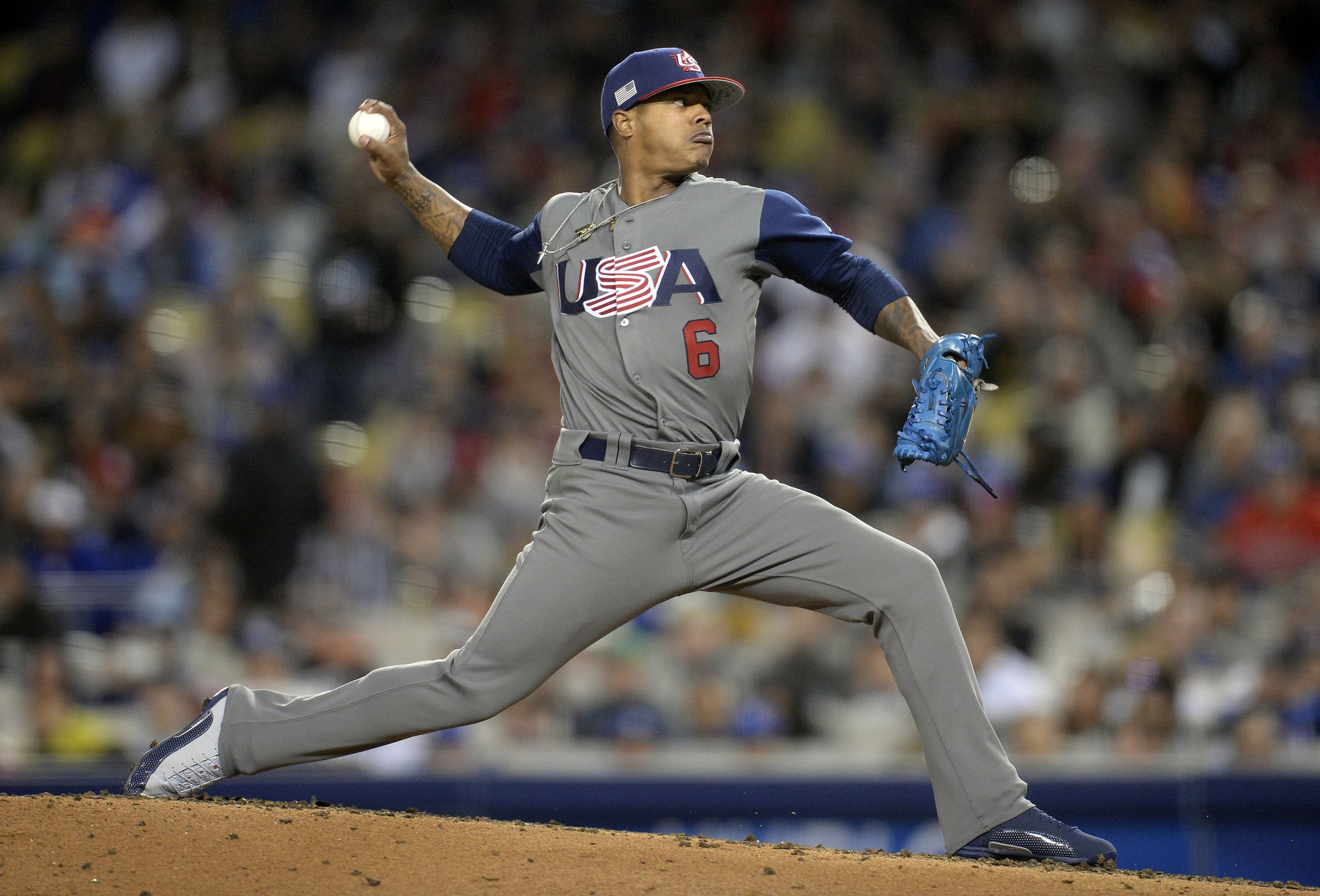The Toronto Blue Jays may have two games in the books, but Marcus Stroman’s 2017 season will kick off tonight against the Tampa Bay Rays – the second consecutive year in which he’s debuted down at Tropicana Field. While it’s only his first of hopefully thirty-two, it’s an important start for Stroman at the beginning of what everyone expects to be a very big year. The 2016 season was something of a mixed bag in his return from knee reconstruction, as the playoff hero faced questions about the deployment of his arsenal and struggles to strand runners on his way to a disappointing 4.37 ERA; all despite underlying numbers suggesting he’d pitched much better.
His first test will come against a familiar opponent, as Stroman faced the Rays four more times after his Opening Day start last season. The particulars of Stroman’s six-pitch mix – four seam fastball, sinker, changeup, slider, curveball, and cutter – are widely documented, but what was most interesting about the head-to-head matchups last season was how he chose to use it to attack a team with which he’d become increasingly well-versed. With data from Brooks Baseball, the table below shows his pitch usage across the five Tampa starts in 2016.
Stroman opened the year clearly focusing on his sinker and slider with a few four seamers and cutters mixed in, but when facing the Rays again four weeks later, he brought the curveball out of the workshop. With 19 thrown, it was his second most relied upon pitch in a game where he induced 13 whiffs and nine total strikeouts.
In round three on May 17th, Stroman again focused on the sinker, but threw each of his changeup, slider, curveball, and cutter between eight and 15 times. The Rays totalled seven runs on a career-worst 13 hits for Stroman, battering him from the first pitch, so this seems less like an intentionally diverse approach and more of an attempt to find something – anything – that they wouldn’t crush in hopes of keeping his head above water.
The fourth and fifth battles wouldn’t occur for another three and a half months, with Stroman facing the Rays twice in the month of September. In their penultimate matchup he went back to his opening day approach with mostly sinkers, sliders, and cutters, then two weeks later, went in an entirely new J.A. Happ-esque direction with four seam fastballs, sinkers, and cutters accounting for 86 percent of his total pitches thrown.
Looking ahead, Stroman had two starts picked up by the Trackman cameras during the World Baseball Classic in March, and while the sample size is extremely small given the pitch count limits, it gives us some insight into how Stroman might be looking to use his arsenal after an offseason of study and self-evaluation. Against the Dominican Republic he threw 36 sinkers on 64 pitches, with the curveball (12) serving as secondary support. A few four seamers, changeups, and cutters were mixed in, but Stroman threw zero sliders. Eleven days later in the final against Puerto Rico, 53 of 73 pitches were sinkers, and he flipped his breaking ball usage with 11 sliders against just one curveball. Again, the other three pitches served as tertiary support.
If this (admittedly brief) trend carries any meaning, we should expect Stroman to again employ a sinker heavy approach against Tampa Bay. Though that wouldn’t at all be shocking, it still represents something of an adjustment after the four seam fastball was reintroduced with more regularity in the second half last year. The bigger question seems to be whether the slider or curveball plays second fiddle. According to Roster Resource the Rays are likely to send five lefties out against Stroman, but this is unlikely to be a deciding factor. In 2016 the slider and curveball were equally effective against southpaws as they hit just .169 and .147 off the breaking balls, respectively. He went slider heavy against the Rays in three of his five starts and limited damage each time, but also had his most success when the curveball was his number two offering. What he has never tried against the Rays is a sinker/curveball attack without the slider as backup – the Dominican Republic method, as it were.
Stroman could continue his World Baseball Classic breaking ball approach but also show Tampa Bay a new look by using this Dominican Republic strategy, with a handful of four seam fastballs, changeups, and/or cutters used only as filler. A different tactic would certainly help get Evan Longoria out of his comfort zone, which at this point feels necessary as the future Hall of Famer is a career .364/.391/.727 hitter against Stroman in 23 plate appearances.
Thirsty for baseball, most fans will be plenty attentive to the game already. But how Stroman chooses to attack the Rays will be an interesting and deserving storyline all by itself. If the right hander can look as good as he did against a pair of stacked lineups in the World Baseball Classic over most of the 162-game season, the Blue Jays might just find themselves with more aces than a deck of cards.
Lead Photo © Gary A. Vasquez-USA TODAY Sports

